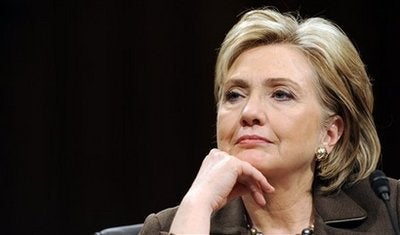
As is well known, popular perceptions of the United States in most places around the world have taken a nose-dive over the past eight years. The highest level US official in charge of spreading America's message, Undersecretary of State for Public Diplomacy James Glassman, recently said, correctly, that the world is angry at America because of America's policies and actions, not because we've done a poor job of explaining ourselves.
But although the election of Barack Obama and the coming changes in some of the more controversial areas of US foreign policy will do more than anything else to improve global perceptions of the United States, America still needs to do far more to effectively make its case internationally.
As the new administration enters office, the following three major steps can be taken right away to set a new tone for America's public diplomacy under the Obama administration.
First, America's diplomats should embark on a one month "listening tour" of the world. Gandhi travelled around India hearing from Indians of all ilks for two years when he returned from South Africa in 1915 and Hillary Clinton's listening tour around New York state at the beginning of her first Senate race did more than anything to set the tone for her candidacy. There is no reason why all senior US diplomats can't do the same. Secretary of State Clinton, the regional Assistant Secretaries in the State Department and the Department of Defense, US Ambassadors, and other leading officials should spend a month meeting with foreign leaders and all types of foreign non-governmental groups with the express purpose of active listening.
One often articulated reason for global hostility towards America is the feeling among some non-Americans that although America's actions tremendously impact their lives, they have no say in what America does. The United States does not need to extend voting privileges in U.S. elections to foreigners, but we would make an important statement by demonstrating in a very direct and symbolic way that we are listening. At the end of the month, the Secretary of State should give a speech outlining the broad trends in what has been heard and what steps the U.S. will take to make sure that we will remain active listeners to the voices of the world, even if we might not be able to take action on all that we hear.
Second, we must transform the American government's primary means of public communication from a one-way broadcast model to a two-way dialogue model. American broadcasts like the Voice of America and Radio Free Europe, and statements through a wide array of spokespeople have been effective tools at least since the Second World War and remain important today. But as globalization and the information revolution transform the global communications environment, one-way broadcast dissemination of content is becoming relatively less important as two-way interactive communication emerges as the new model.
The State Department has taken some important first steps in engaging bloggers and holding press events in virtual worlds like Second Life, but what is ultimately needed is an overall paradigm shift in how the United States government thinks about communications. The technological foundation needs to be laid for much broader public engagement by US diplomats, but more importantly, the job descriptions and training programs must be transformed to place this type of engagement at the center of what any US diplomat does. US government-funded television networks should feature debates that articulate both sides of a given position, and the US government should do far more to support the development of indigenous independent media around the world, even those that can be critical of American actions. America's public diplomacy will be far more effective if it concentrates on promoting what America stands for more than on selling its case. At the end of the listening month, all US Ambassadors and other officials can engage in online and broadcast open dialogues with key constituencies impacted by US actions.
Third, America needs to speak to the world in the languages the world understands. For some, those languages will be twitter-speak, but for even more, they will be actual foreign languages. Secretary Clinton should therefore appoint dedicated State Department spokespeople to give weekly briefings in Spanish, Chinese, and Arabic. Some diplomats will rightly express concern that there can only be one official language for the careful expression of diplomatic communications. Because U.S. statements are being translated into local languages anyway, it seems far better for America itself to be doing the translating. Most countries have spokespeople who communicate officially in English. The time has come for the United States to demonstrate its respect for other language groups by holding regular briefings in foreign languages from the official State Department press room in Washington.
Far more will need to be done to rehabilitate American public diplomacy on many levels, but the new State Department team will only have one chance to make a first impression. Taking these three first steps will help pave the way for even greater improvements in America's public diplomacy profile that are likely to come under the new team.
_______________________________________________________________________________
Jamie Metzl is Executive Vice President of the Asia Society. He coordinated US Public Diplomacy for the National Security Council during the Clinton Administration and served as Senior Coordinator for International Public Information in the Department of State. The views expressed are his own.